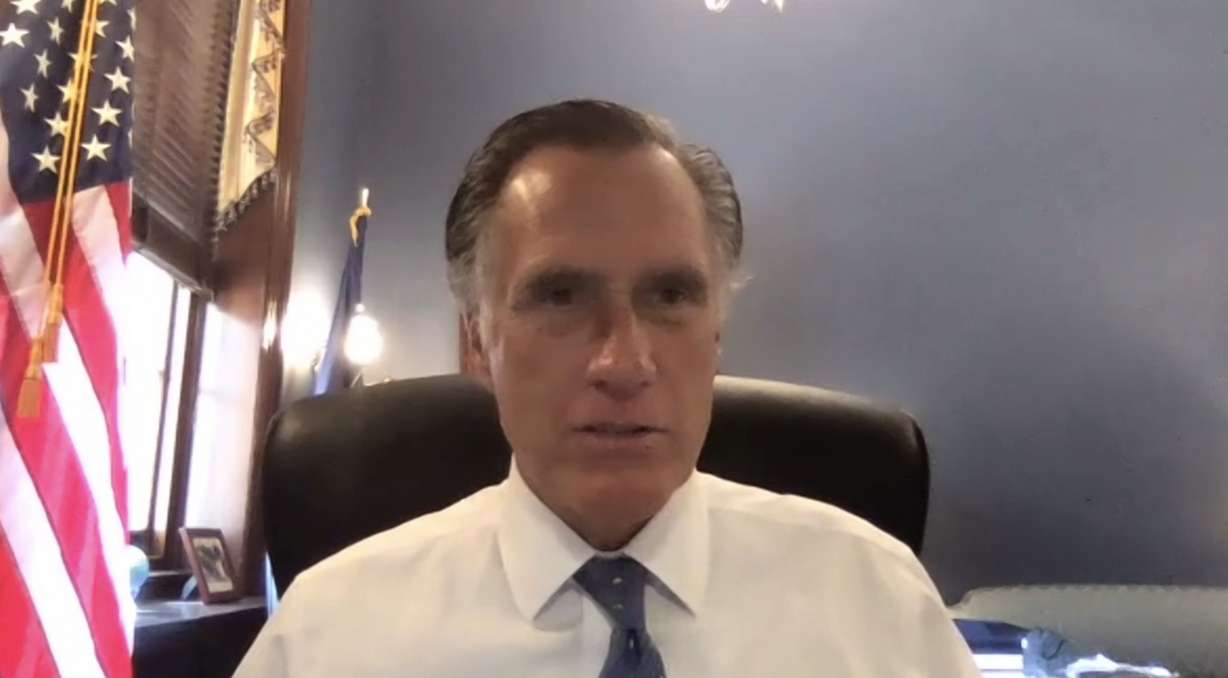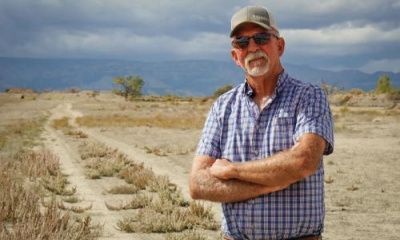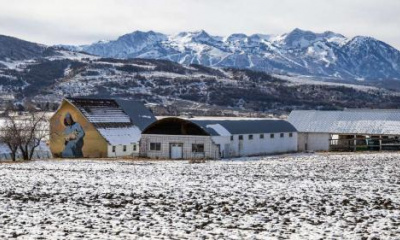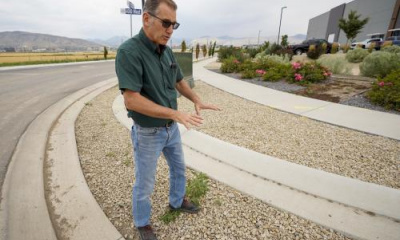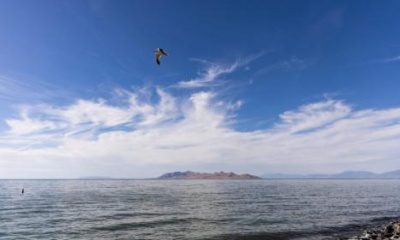SALT LAKE CITY — Utah Sen. Mitt Romney and Sen. Jeff Merkley, D-Oregon, introduced a bill in the U.S Senate last year that aimed to study saline lakes.
The bill struggled to garner attention because, as the Utah senator put it, not many people appeared to understand or care about the Great Salt Lake. While researchers have warned about the serious impacts that the drying Great Salt Lake would have on the environment, the issue was seemingly bottled in Utah.
That's why he doesn't believe that recent coverage of the drying Great Salt Lake in the New York Times and other national outlets has really made a difference in the concern Utahns already have about the lake. However, it seems to have helped his Washington colleagues understand the importance of the situation.
"Now they understand. 'Yeah, we care' because it's going to send arsenic into the air and other heavy metals, and that won't only affect Salt Lake City and impact the global economy, it will also affect other communities (east of Utah)," Romney said.
"It's a real problem for our country and I think that is something that the national media has caught onto ... so my colleagues in the Senate and the House realize this is a big problem," he adds. "This is not just a Utah problem, this is an American problem."
It's also a problem that will likely require "many billions of dollars" to solve, which he says is now the next step regarding the struggling lake.
Romney made the comments in a video conference call with members of Utah media Wednesday, highlighting a similar bill that he introduced along with Utah Reps. Burgess Owens and Chris Stewart. The bill authorizes $10 million for the U.S. Army Corps of Engineers to "monitor and assess" the water availability and conditions of saline lakes in the Great Basin, like the Great Salt Lake, to help better understand the lake's ecosystems.
It also creates a feasibility study to address the ongoing drought conditions around the Great Salt Lake, which would look into any "potential technologies" like pipelines, coastal desalination plants or canal reinforcement projects that could redirect water sources to the lake. This includes the possibility of permitting the redirection of water sources across state borders into the lake.
The Great Salt Lake reached a record-low level on July 3, as levels dropped to 4,190.1 feet at the U.S. Geological Survey's Saltair station. It's since dropped at least another tenth of a foot, with some periodic levels below 4.190 feet, according to the federal agency.
The Utah Division of Forestry, Fire and State Lands estimates that it would cost anywhere between $1.69 billion to $2.17 billion if the lake drops another 10 feet in the future. Beyond that, every 8 feet it drops exposes 30 miles of lakebed that contains heavy metals that have been absorbed over time. That's on top of the impact it would have on the 10 million migratory birds who use the lake every year.
Romney said the money requested in the bill has already been secured and he expects that recommendations for solutions will begin to emerge within the next year. Those results will be used to outline strategies to help increase lake levels in the future.
How much will a solution cost?
What those solutions are and how much they will cost remains to be seen, but every extreme idea will likely be expensive.
For instance, in 2012, the U.S. Bureau of Reclamation studied the idea of a pipeline to pump water from the Missouri or Mississippi rivers to the West; the agency estimated at the time that such a project would cost between $8.6 billion and $14.6 billion, according to the Arizona Daily Star. Taking inflation into account, that would be upwards of about $18.2 billion today.
I do believe the recognition of the consequence to Utah, to the national economy and to surrounding states, the consequences of that being well-known will tend to concentrate people's minds to take action.
–Sen. Mitt Romney
A Great Salt Lake pipeline is something that would be considered in the new federal study, though the idea has many skeptics. Gov. Spencer Cox, in a joint interview with KSL-TV and the Salt Lake Tribune for the Great Salt Lake Collaborative on Tuesday, says he still believes a pipeline is "very dubious" but he has come around to at least considering it along with any other unconventional idea imaginable.
"We owe it to everyone to look at every possibility out there," the governor said.
Romney agrees that it's worth studying even if it's a pipe dream. He also believes the cost of a solution will be worth it, pointing to the Big Dig, a Massachusetts project that was still underway when he was governor there, that ultimately cost over $15 billion.
"If we're willing to spend $15 billion on the Big Dig, we ought to be willing to spend whatever is necessary to make sure we preserve the Great Salt Lake and the economy of Utah and, to some degree, the economy of the nation," he said.
But looking at the eye-popping estimates makes it easier to ask, what if Utah cut back on the water it uses?
What about conservation?
Utah passed a handful of bills over the past legislative session that leaders believe will help the Great Salt Lake. The state altered the "use it or lose it" component of its water law earlier this year to allow for those with water rights to donate or lease their water rights to improve streamflow into the Great Salt Lake, Cox said.
One law, in particular, also outlined $40 million to be used to protect and restore the Great Salt Lake watershed. The National Audubon Society and the Nature Conservancy were brought on in June to help oversee that program. Cox adds that Utahns in residential areas are doing better at cutting back the water they use on lawns, while more and more farmers are looking at ways to be more efficient with their water use, too.
Romney contends anything that helps reduce water consumption so that water from Utah rivers and streams flows into the lake is "probably the straightforward, least expensive and most tried-and-true method" to help the lake, but studies aren't clear yet regarding how much it will help. And with less precipitation and a series of poor snowfalls in recent decades, he's not sure if reducing consumption alone will be enough.
All of this will be considered in the upcoming study of the lake.
"I believe (conservation will do) a lot, I presume a lot, I hope conservation alone will get the job done — if not, we'll have to look at some of the more extreme options," he said. "I hope we don't have to reach those. We may not have to."
Until the U.S. Army Corps of Engineers completes its study, the senator said the future will be "hard to predict." What is much easier to predict is what will happen if the Great Salt Lake continues to decline at the pace it's currently trending.
Given what's at stake and the new national attention on the issue, Romney believes the Great Salt Lake won't be ignored like it once was.
"I do believe the recognition of the consequence to Utah, to the national economy and to surrounding states," he said, "the consequences of that being well-known will tend to concentrate people's minds to take action."

